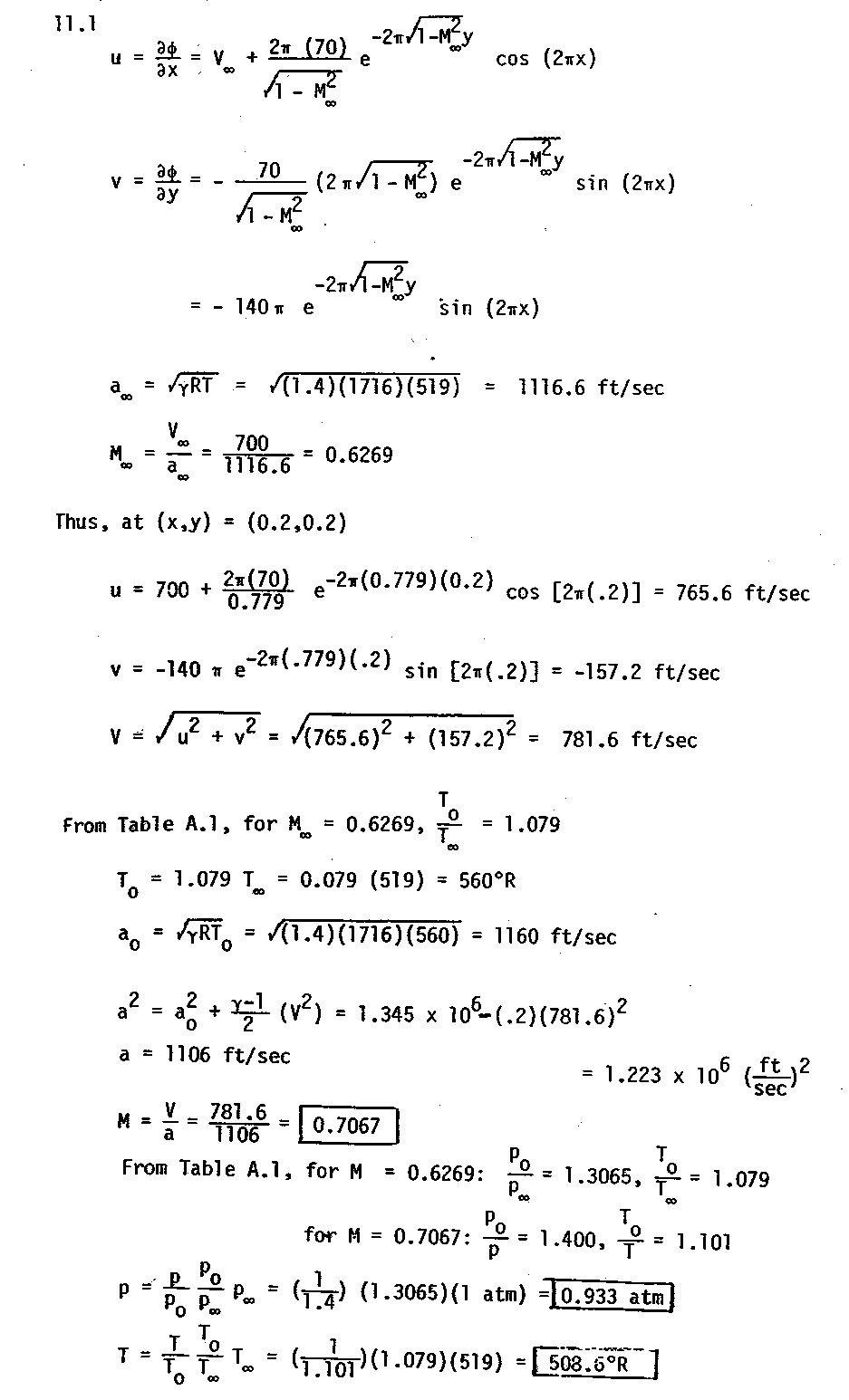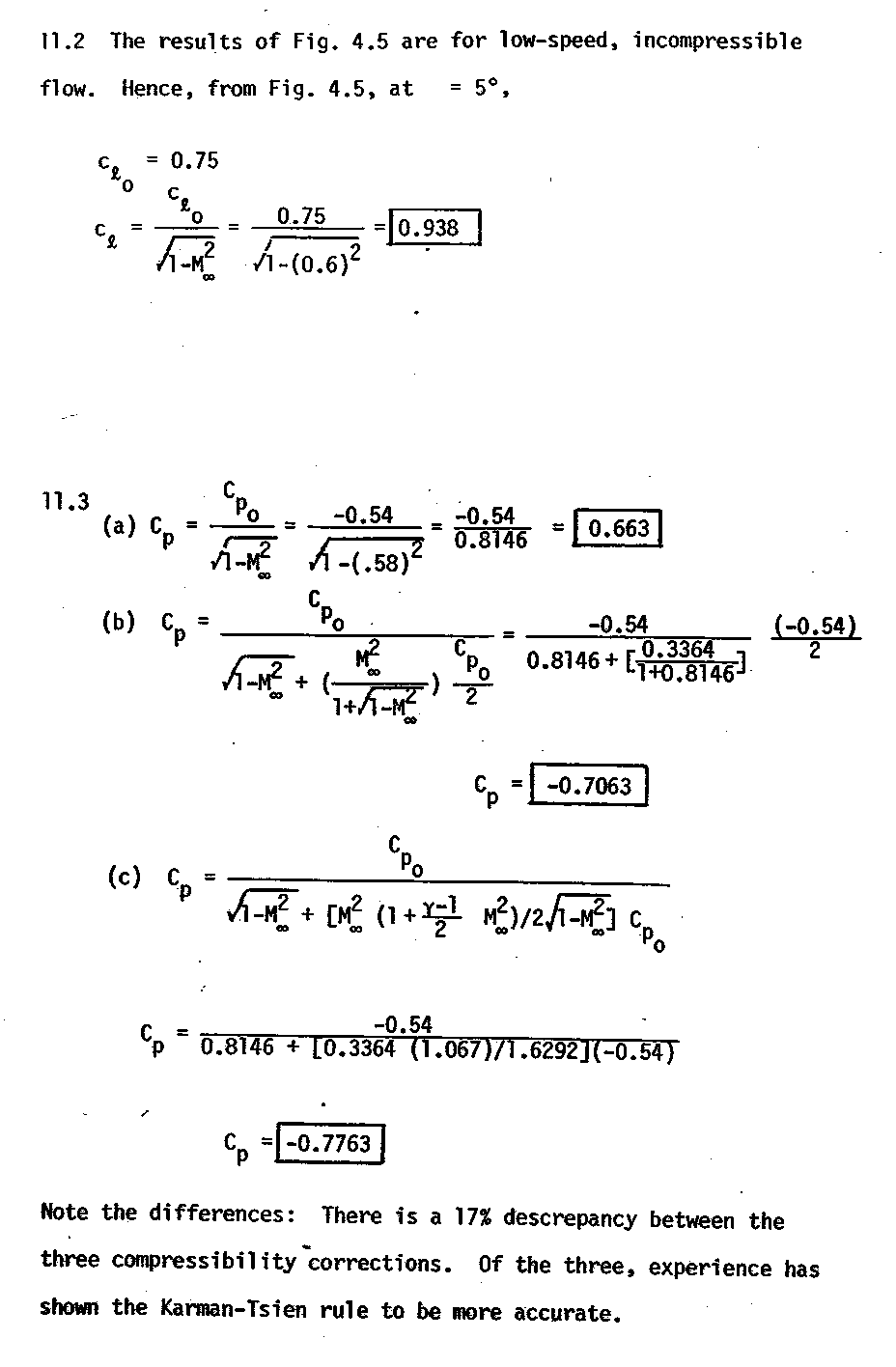MAE 3303 Aerodynamics of Compressible Flow
Homework 9 Solutions
Answers to Study Questions
- What is the definition of the vorticity?
ans: The curl of the velocity, Ñ×[u\vec]
- What is the physical meaning of the vorticity?
ans: Rate of rotation of a fluid element about its center of mass.
- What does it mean for a fluid to be irrotational?
ans: Vorticity is zero.
- According to Crocco's relation, under what conditions will an inviscid fluid
be irrotational?
ans: Steady, adiabatic, no curved shocks or shock intersections.
- List two flow features on a supersonic airfoil that will invalidate the irrotational
assumption.
ans: Bow shock if present, flow within the boundary layers.
- Why are irrotational flows easier to analyze than general rotational flows?
ans: The momentum equation can be replaced with the condition [(w)\vec] = 0
- What is the definition of the velocity potential?
ans: [u\vec] = Ñf
- Does a velocity potential exist for every possible flow? Explain your answer.
ans: No. The potential will exist only if the flow is irrotational.
- The velocity potential guarantees what property of the velocity field?
ans: Irrotational.
- What significant complication is present in the compressible potential
equation that is absent in the incompressible analog?
ans: Non-linearity.
- What is the motivation behind the small perturbation assumption?
ans: Remove the non-linearity from the potential equation.
- What is the perturbation velocity potential? How is it related to the
full velocity potential?
ans The potential that gives rise to the perturbation velocities.
F = U¥ x + f.
- What major simplification is made in going from the full velocity
potential to the perturbation potential equation?
ans: The perturbation potential equation is linear.
- For what Mach number ranges is the perturbation potential equation
valid?
ans: M¥ £ 0.8, 1.2 £ M¥ £ 5.
- What geometrical constraints are imposed on an airfoil shape if it is to
be analyzed with linear (small perturbation) theory?
ans: It must be thin and flying at low angle of attack.
- State the formula for the linearized pressure coefficient.
ans: Cp = -2u/U¥
- How can a compressible subsonic flow be related to an incompressible
flow?
ans: Through the Prandtl-Glauert similarity rule, i.e.
f = [`(f)]/Ö{1-M¥2}, where f is the disturbance
potential at M¥ and [`(f)] is the disturbance potential at
M = 0.
- What is the utility of the Prandtl-Glauert similarity rule?
ans: It relates the flow at M¥ £ 0.8 to the incompressible flow
around the same body.
- What is the Prandtl-Glauert compressibility correction?
ans: Cp = CP0/Ö{1-M¥2}, where Cp is the pressure
coefficient at M¥ and Cp is the pressure coefficient at
M¥ = 0.
- Why are the improved compressibility corrections (i,e, Karman-Tsien)
more accurate?
ans: since they account for the local variations in Mach number (higher order
corrections).


File translated from TEX by TTH, version 2.00.
On 8 May 2000, 15:53.


